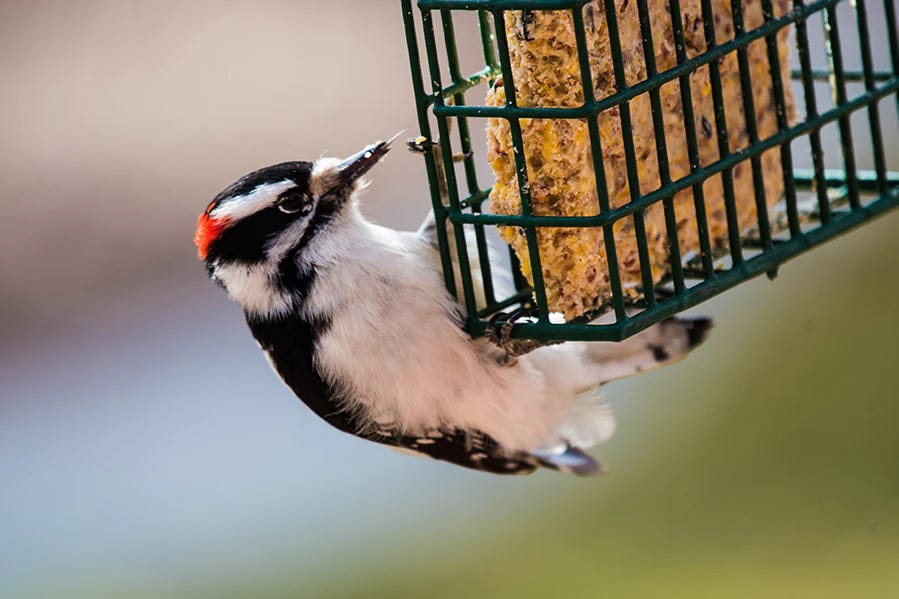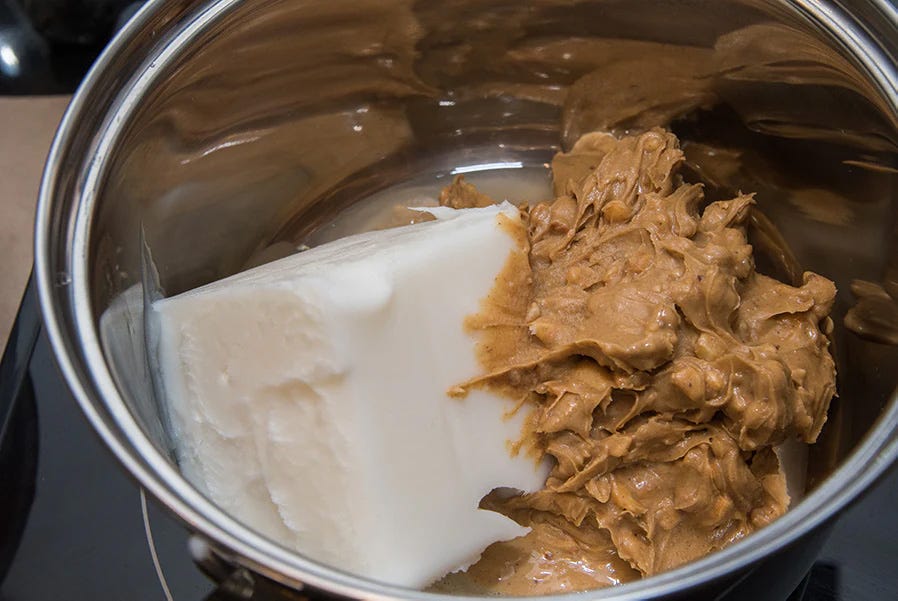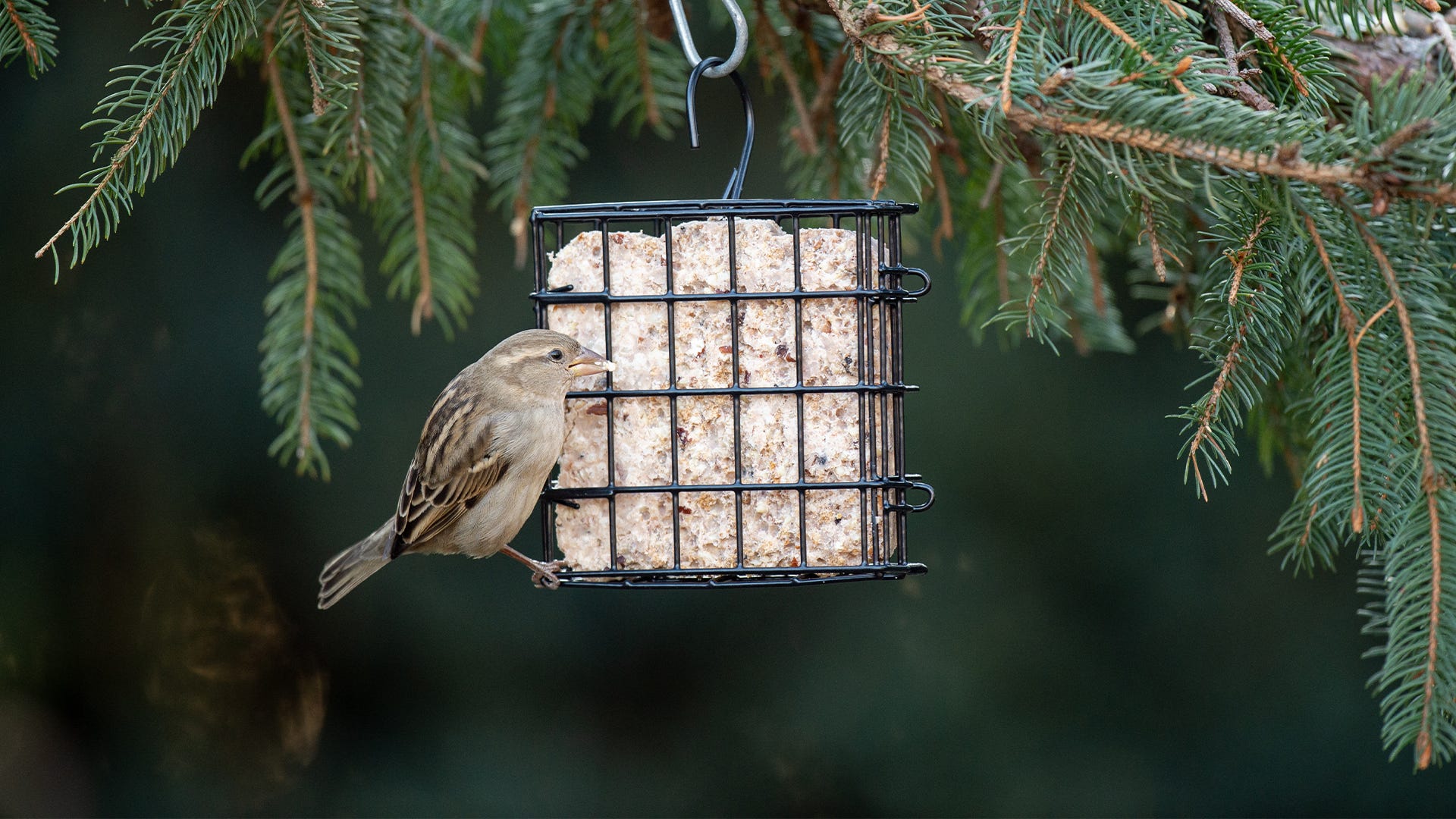Suet is an ideal food for birds year-round, but it can quickly become a melted, sticky mess in summer. Switching to a no-melt suet recipe can allow you to keep offering this nutritious food to summer birds without an oily mess to clean up.
Why Birds Need Suet in the Summer
Summer is a stressful season for all birds. Breeding birds struggle to protect and nurture their hatchlings, and there are more predators out and about. Birds must constantly compete for the best territories and feeding resources. Summer thunderstorms and excessive heat put additional pressure on birds and other wildlife.
Good, high-fat food rich in calories gives birds plentiful energy to meet all of summer's demands. They will also help feed hungry hatchlings so baby birds can grow properly. Different suet blends also meet a wide range of nutritional needs if seeds, fruit, nuts, and insects are part of the recipe.
If birds can rely on nutritious backyard food sources, they will need to spend less time foraging. They can take advantage of opportunities to rest or tend to other survival tasks.
See also: The Dos and Don'ts of Offering Suet to Birds
Problems With Melted Suet
On the hottest summer days, suet can soften and melt. Because this is a high fat food, it can quickly go rancid or grow mold in high heat or humid conditions. Spoiled suet has a strong odor and can attract unwanted visitors, such as rats, raccoons, and even bears to the feeders.
If suet drips onto the grass or plants, it can damage the greenery, and pets may nibble at spilled, spoiled suet and become ill. Soft suet can also cause stains as it drips onto decks, furniture, or patios. If birds get dripped on, the oils in suet can damage their feathers similar to oil spills.
Fortunately, not all suet will melt, dribble, or drip. Summer-friendly suet blends have lower fat content and will melt much less readily, allowing this top food to be offered to hungry birds even on the hottest days.
See also: A Guide to Feeding Birds Peanuts
No-Melt Suet Recipes
There are many different no-melt suet recipes available, and you can even tweak your own personal recipe to keep it from softening in the heat. In general, no-melt suets contain less fat and greater quantities of flour, oats, cornmeal, or other absorbent components that will help bind the fat together without melting. A top no-melt suet recipe is:
- 2 cups quick or rolled oats
- 2 cups ground cornmeal
- 1 cup wheat or all-purpose flour
- 1 cup lard or suet
- 1/3 to 1/2 cup sugar (can be reduced or eliminated if desired)
- 1 cup crunchy peanut butter (use a low-fat or low-oil variety for the best results)
To make the suet, slowly melt the lard or suet and the peanut butter together until they are completely smooth and combined. Stir in the rest of the ingredients, mixing well so the entire batch is thoroughly coated. Press the mixture very firmly into molds – suet cake shapes, a cake pan, muffin tin, or just hand-pressed balls or patties – removing as much air as possible to keep the cakes firm.
Refrigerate the cakes for 2-3 hours before putting them out for the birds. You can freeze the extra cakes before using.
Suet Add-Ins
In addition to this basic recipe, you can also add in extra treats to attract even more birds. Top add-ins for homemade no-melt suet include:
- Dried mealworms
- Raisins or other bits of dried fruit
- Sunflower seeds or hearts
- Crushed peanut hearts
- Eggshells that you have baked and crushed into fine pieces (great source of calcium for egg-laying or growing hatchlings)
Adjust the ingredient proportions to suit your backyard birds while keeping the suet firm. Birds will come flocking to your summer suet feeders. Woodpeckers, nuthatches, chickadees, titmice, wrens, jays, and bluebirds are all fond of suet year-round. Even different warbler species, thrushes, thrashers, and blackbirds will nibble on suet.
More Summer Suet Tips
To make the most of every batch of no-melt suet you mix up, freeze each cake before putting it out for the birds. Not only will this keep the cake fresher for a longer period, but a frozen cake will resist melting even on the hottest days. Use smaller cakes or put out less suet at once. This will ensure it is all eaten before it can go rancid.
Position suet feeders in the shade to keep them as cool as possible. If birds don't eat all the suet in one day, you can bring in the feeder and refreeze the cakes before putting them back out for birds in the morning.
Suet is a great year-round food for birds. You don't have to let the prospect of soft, spoiled, melted suet be a problem at your summer feeders. Making no-melt suet is easy and you can adapt it to suit any birds' tastes, giving all your summer birds a nutritious, healthy meal at your feeders.








